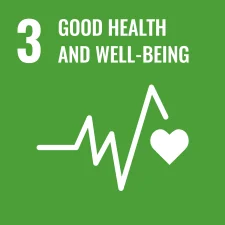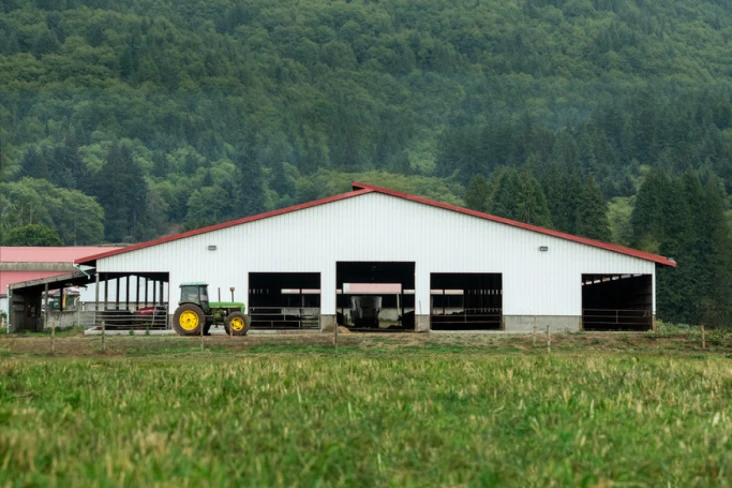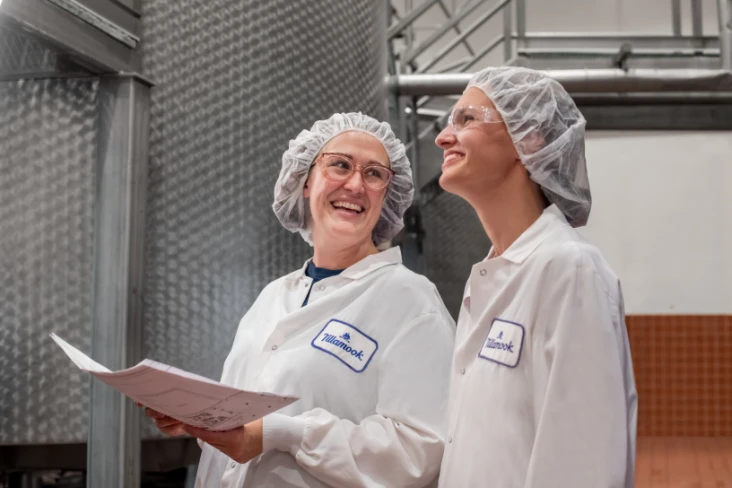At Tillamook County Creamery Association (TCCA), our people are the bedrock of our success. The safety of our employees across our facilities and office locations is of paramount importance to us. Health and safety are of concern in any workplace environment. We are dedicated to encouraging fair, safe and healthful working conditions, as well as an inspired and supportive working environment.
“Employers are only truly sustainable when they ensure the safety, health, and welfare of their workers.”
-Occupational Safety and Health Administration (OSHA) 2016
“Companies that stress the importance of safety are empowering their employees to work safe. This can be a great motivator in the work place.”
-Pete Wilson, Safety and Continuous Improvement Manager, TCCA
Stewardship Charter: At TCCA, we uphold our tradition of doing things right by committing to a business model rooted in Stewardship. In 2017, we established a board-approved, third-party reviewed Stewardship Charter that defines our vision and our framework. Our Charter is centered on commitments to six key stakeholders, which encompass the issues most important to our business: Thriving Farms, Healthful Cows, Inspired Consumers, Enduring Ecosystems, Fulfilled Employees and Enriched Communities.
We use our Stewardship Charter as the anchor of our Stewardship Management System; that is, we have policies, procedures, documentation, measurement and communication, which cascade from the Stewardship Charter and guide our decision making. Adopting a management system like this is intentional—it ensures we embed our Stewardship commitments across all business functions, not just within our Stewardship Team. It also holds us accountable to our farmers, consumers, suppliers, employees, customers and neighbors. Upholding our Stewardship Charter is one of our five company shared values and one of our four business objectives, or time-bound goals.
One of our Stewardship Charter commitments is Fulfilled Employees. As part of this commitment, we work to uphold the safety, health and well-being of all employees. We are dedicated to maintaining a productive workplace by minimizing the risk of accidents, injury and exposure to health risks. 100 percent of our employees are covered by an occupational health and safety management system that is audited annually. Additionally, 100 percent of our site contractors and subcontractors performing work on our sites are covered under our Contractor Safety Program. Additionally, every single year our contractors and subcontractors are required to review the Contractor Safety Program annually.
At a minimum, we comply with applicable safety and health laws, regulations and internal requirements. We strive to maintain a workplace that is safe, secure and free from violence, harassment, intimidation and other unsafe or disruptive conditions. Security safeguards for employees are provided as needed and regularly maintained with respect for employee privacy and dignity.
We also commit to continuously improving through ongoing engagement with employees, identification of hazards and tracking of pertinent metrics to measure remediation and progress.
Employee Handbook: Our Employee Handbook encompasses employee policies, procedures and benefits. This includes our Safety Policy, which specifies that employees have a right to expect a safe and healthy working environment and safe job methods and practices. It also includes our Human Rights Policy, which defines a safe and healthy workplace as a fundamental right. All employees are required to read and sign the Employee Handbook during the onboarding process.
Contractor Safety Manual: Our Contractor Safety Manual establishes our safety orientation program for contractors, including trainings, hazard identification and risk assessments. Our contractor orientation program provides contract companies with applicable safety rules and procedures. Prior to awarding a bid, our contractors and subcontractors are evaluated for their safety performance, Occupational Safety and Health Administration (OSHA) compliance, and safety policies and procedures. We look at their applicable safety policies and procedures. Qualification of contractors and subcontractors matches the safety requirements of the job (e.g., fall, powered industrial truck program (PIT), confined space, and lockout tagout procedures.
Site Safety Committees: Each of our operating sites—Tillamook, Portland and Boardman—has a designated Safety Committee to implement and socialize safety procedures and precautions. Meeting discussions are documented with meeting agendas and meeting minutes. Records of documentation are maintained. Safety Committees have voting representatives and one chairperson to oversee committee activities and report back to safety managers.
Monthly Safety Meetings: Our Safety Team holds monthly safety meetings across all sites to identify potential health and safety risks and to communicate precautionary measures. It is an expectation that all employees attend these meetings. Meetings are available online if employees cannot attend.
Key Performance Indicators: Our manufacturing facilities regularly undergo comprehensive safety inspections by the Oregon Occupational Safety and Health (OR-OSHA) inspectors. We also conduct detailed annual safety self-assessments, verified by an external consultant to gauge our health and safety performance. Finally, we track key performance indicators on our Operations Scorecard, including:
Recordable Injury Frequency (target 4.78): 5.47
Lost Time Injury Frequency (target 1.32): 1.93
Safety Training Completion Rate, Boardman (target 95 percent): 90.20 percent
Safety Training Completion Rate, Tillamook (target 95 percent): 75.80 percent
Grievance Mechanisms: We strive to react promptly and respond fairly to every concern, question or complaint raised by an employee. All employees are urged to use the following procedure should they have a concern, question or complaint:
Speak directly with supervisor, if comfortable.
Speak directly to a representative from People and Culture Department, if uncomfortable speaking directly with supervisor.
Give written complaint to supervisor within 14 calendar days of the date problem arose.
A People and Culture representative will investigate and respond to employee concerns within seven to 10 days. This period may be extended, depending on the facts and circumstances of each case.
Key Players: Our Director of Safety and Continuous Improvement leads a department of facility safety managers, site training administrators and continuous improvement coordinators. Our managers and supervisors are responsible for maintaining a safe working environment and for the implementation of the safety programs within their respective departments. All employees are expected to adhere to safety rules as part of their job duties.
Our Farm Services Team works collaboratively with our Safety Team to provide technical support to our farmer-owners for on-farm safety. Farm related accidents include equipment injuries, falls, confined spaces, chemical exposure and loss of hearing due to loud noises. Through our Technical Assistance Program, we offer resources and in-house training for our farmer-owners to address these safety issues, build appropriate farm-worker trainings and select appropriate safety equipment.
Implementing an effective and proactive occupational health and safety management system is a critical part of doing business. Our system has been implemented because of legal requirements including Occupational Safety and Health Administration (OSHA), State regulations and insurance carrier policies. Our manufacturing sites and office locations are covered in fundamental components of the program and each have an annual safety plan to improve compliance, reduce injuries and identify appropriate goals and objectives. Our health and safety program follows a continuous improvement model.
We have specialized programs and procedures to prevent and mitigate negative health and safety impacts and incidents. These include, but are not limited to: emergency preparedness program, electrical safety, lockout tagout, confined space entry, power industrial truck, fall protection, machine guarding, ergonomics, personal protective equipment, hearing conservation, respiratory protection, ammonia systems, fire protection, crane and hoists and contractor safety. To maintain our high standards, we provide all employees—full- time, part-time, seasonal and temporary as well as interns—the necessary training, tools and support to feel and perform work safely.
All Safety Committee members and new representatives receive training in committee functions, hazard identification and procedures for investigating accidents. Training is provided through OR-OSHA and its occupational safety and health workshop as well as in-house training.
Specifically, the Safety and Continuous Improvement Department conducts annual hazard recognition training for all Safety Committee members and other employees who perform audits and inspections. All pre- and post-installation assessments and inspections conducted for new equipment, machinery and/or processes are documented. For example, documented inspections of emergency eye wash stations occur regularly, verifying that they are operational, clean, sanitary and unobstructed.
Employees are expected to detect and report unsafe work conditions, incidents, injuries, practices, property damage and unsafe behaviors in the workplace. Prompt reporting is encouraged to ensure that no further harm can occur to co-workers and property. Reporting to immediate supervisors, Safety Team, Safety Committee member or the People & Culture Department is encouraged. Where investigations are required, employees are expected to fully cooperate and assist with the process. Following detection and reporting, our Safety and Continuous Improvement Department strives to take prompt action in order to mitigate and manage any health and safety risks and impacts. Per policies in our Employee Handbook, employees can bring complaints, ask questions and raise concerns without fear and reprisal.
Additional opportunities for involvement include:
First Responder training: We offer annual training for our First Responders in first aid and CPR.
Hazmat response team: This specialized team has extensive training in emergency response and hazardous material handling. This team is our response for a hazardous spill or accident.
Confined space rescue team: This team was developed to address any emergency rescue from a confined space.
We offer all full and part-time employees health insurance plans that cover medical, dental, vision and life insurance, as well as a tobacco cessation plan. Full-time employees are also eligible for a fitness incentive benefit reimbursement program through IncentFit.
We also encourage our employees to connect on-the-job health and safety and at-home health and safety. Twice every year, we offer our employees a personal consultation on nutrition and diet advice, physical health, exercise, ergonomics and any wellness related questions with a nutritionist and trainer. Employees can also participate in a body composition testing service. Previous measurements are available for review in order to evaluate progress. The aim of these services is to encourage employees to maintain a healthful lifestyle. All discussions and results are confidential and accessible only by the employee and their nutritionist.

U.N. SUSTAINABLE DEVELOPMENT GOALS

Goal 3
Ensure Healthy Lives and Promote Well-being for All at All Ages
Our occupational health and safety management program encourages a safe work environment for our employees.





